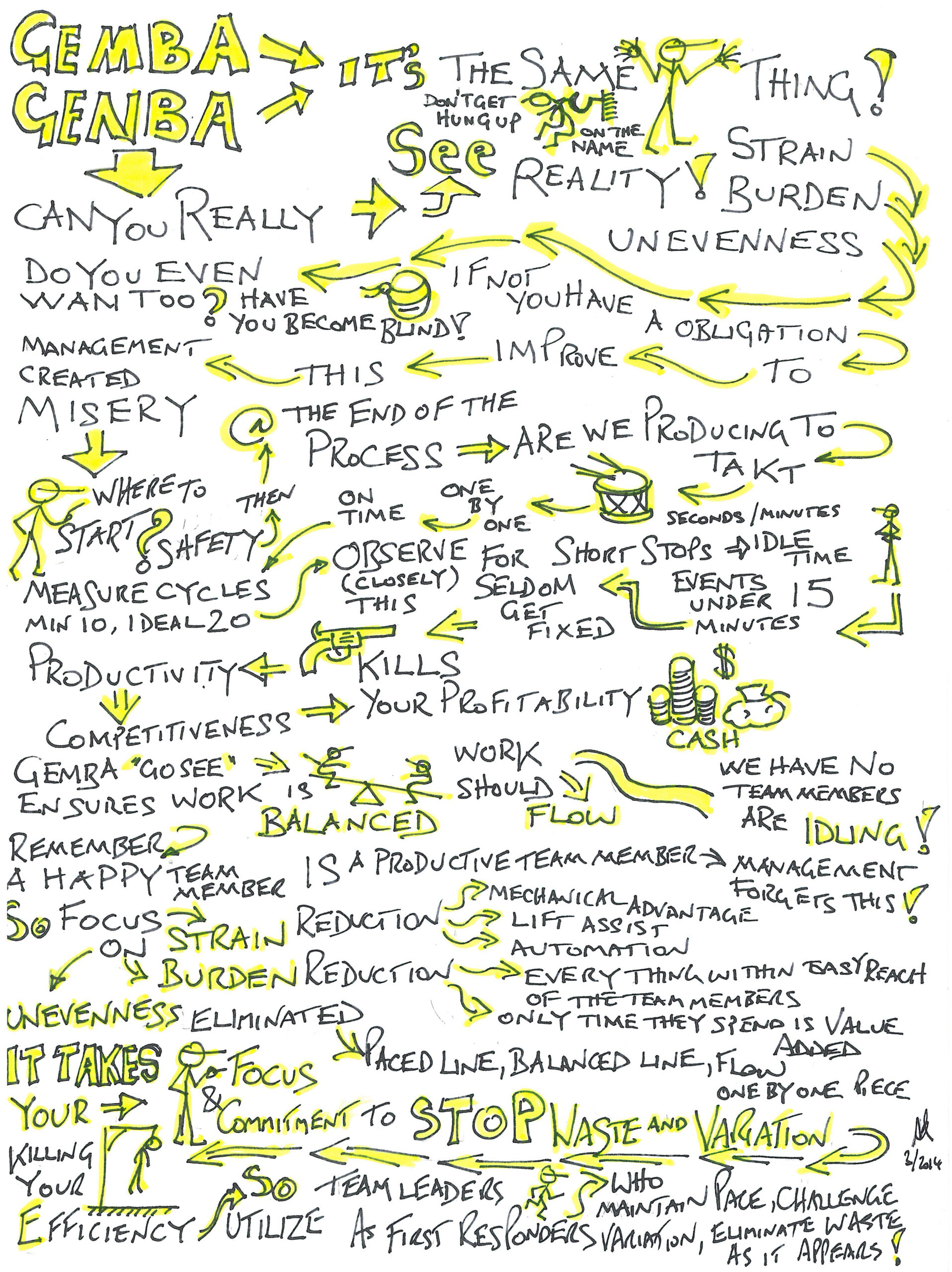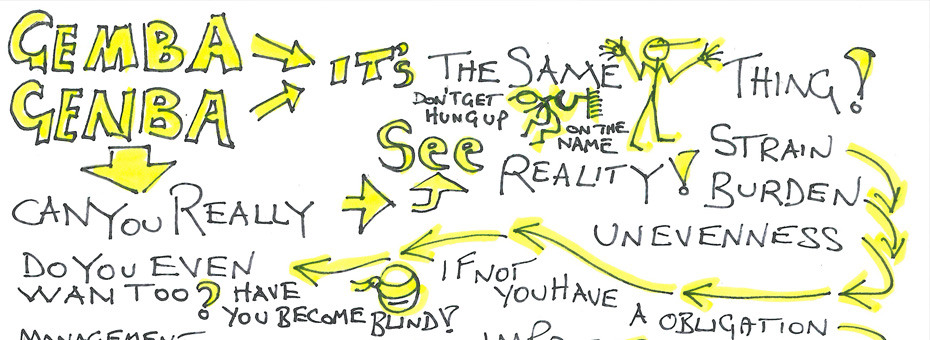Gemba or genba? That’s what I often hear in lean circles, but here’s a better question: Why are we so stuck on this distinction when there are bigger fish to fry? Gemba walks may sound like Lean 101 but they still require 110% of your undivided attention. And even then the problems that sent you on the gemba walk may go unnoticed if you don’t know what exactly you’re looking for.
Walking the gemba is all about learning to see your team members’ strain, burden and unevenness – and then deciding how to eliminate it.
So take a look at the sketch here (click to see a larger image), which I use to map out gemba walks and make things easier to take in. I start by asking myself if I can see the above three causes of waste at the gemba itself? Or am I ‘blind’ to the misery that management has let creep back into the process?
I always start at the end of the process I’m examining and work the gemba backwards to the beginning. Cycle times need to be captured first to check if the process is functioning at, behind or ahead of rate/takt. And then I work my way back, station-by-station, looking for the disconnects that may be stealing productivity and competitiveness. And I ask myself: can I ‘see’ idling team members, hidden bottlenecks on machinery (stoppages under 15 minutes), and/or team member strain, unevenness and burden?
Once I’ve pinpointed them, I get my team members’ buy-in on any improvements. This is key – we can’t forget to harness and involve the people in key roles as our advocates and supporters to sustain gains. The role of the team leader in this is critical to maintaining improvements made through gemba observations.
So based on what I have said and what you can extract from the sketch (which I hope is making you think!) would you feel comfortable tackling a gemba walk now this way? Or do you have another approach you can share with our readers?





